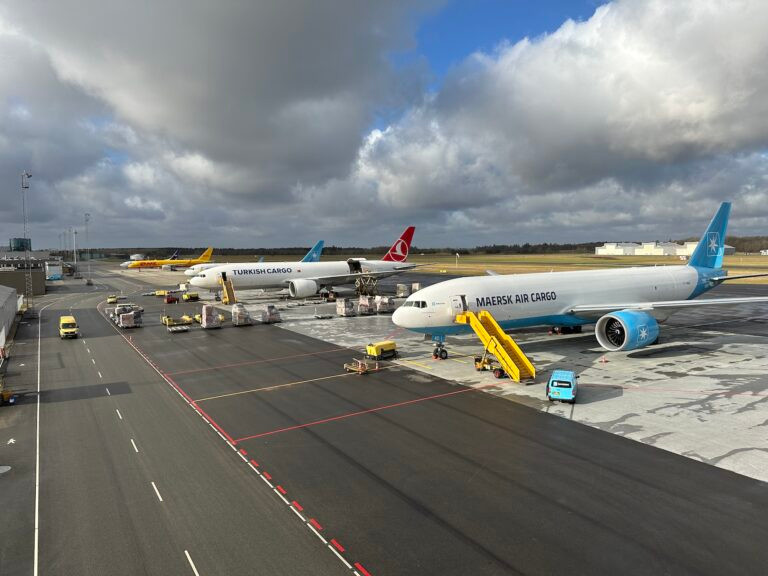For decades, Denmark’s logistics landscape has primarily revolved around exports. But at Billund Airport, a strategic move is under way — one that enhances the country’s second-largest airport by adding capacity for a critical hub for e-commerce imports across northern Europe.
“Traditionally, Denmark has always been an export-heavy country,” Kaspar Andreas Nissen, Senior Manager Air Cargo at Billund Airport, said. “To open new routes, you need cargo going both in and out. Jumping on the e-commerce wave gave us that opportunity.”
The airport began developing a dedicated e-commerce service a few years ago, addressing a long-standing challenge in customs inspections — the manual retrieval of individual parcels flagged for checks. “That was the missing link,” he said. “We worked closely with Logistics Service Billund Airport, to create an efficient, fully integrated solution.”
The move has already paid off. With regular e-commerce flights operating daily and streamlined customs handling, Billund is gaining recognition for its operational agility. “We really started to get some eyes on how we handle e-commerce,” he added.
Partnership, process, and precision
Collaboration lies at the heart of Billund’s strategy. Cargo handling and logistic service providers at the airport “make things a lot easier,” Andreas Nissen expressed.
Central to the airport’s success is its close partnership with Danish customs. “We onboarded the customs authorities from the very beginning,” he said. “We asked them: how would you like to see inspections done? Where should things be placed? That collaboration means inspections are now faster, smoother, and less disruptive.”
Such coordination has allowed Billund to maintain speed without compromising safety. The airport remains one of only two in the world authorised to use the advanced REST (Remote Explosive Scent Tracing) method for airfreight screening. “We can take an air sample from a sealed truck or container and have a trained dog assess it,” he explained. “A full truckload can be cleared in about 20 minutes.”
The system — which took 18 months to implement — is now widely adopted by freight forwarders across Denmark. “It’s faster, safer, and far less resource-intensive,” he said. “It’s been very well received by the industry.”
Infrastructure and investment
Billund’s ambition extends beyond the runway. Earlier this year, a new road was opened to improve truck access, bypassing Billund town entirely. “The municipalities are actively investing in better infrastructure,” Andreas Nissen said. “Now trucks can drive straight into our handling facilities without causing congestion. It’s a win-win situation.”
The airport’s owners — a consortium of local municipalities — are also backing larger development plans.
This expansion is key to Billund’s goal of becoming the e-commerce gateway of northern Europe. The airport’s position offers fast access to major regional markets — within four hours by road to all of Denmark, and easy connections to Hamburg, Berlin, Sweden, and Norway. “We’re very close to the northern German market,” he said. “We’re also developing pharma and fish logistics, making us a preferred freighter hub for the region.”
A balanced, future-focused model
Although cargo now plays an increasingly strategic role, Billund remains a dual-focus airport handling around four million passengers annually. “We are not as per se a cargo-first airport,” Andreas Nissen clarified. “Passenger operations are our main business, and our freighter operations are completely separate. That makes it simpler — we can design our cargo processes specifically for freighters, ensuring each side gets optimal focus”
This clear separation also ensures that growth in e-commerce doesn’t come at the expense of other cargo segments. “We’ve structured it so that Logistics Service Billund Airport manages e-commerce, together with other activities of theirs, while Cargo Handling Billund Airport continues to still focus on general freight,” he said. “Keeping them separate means neither area loses focus.”




